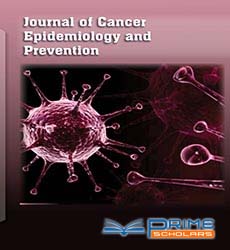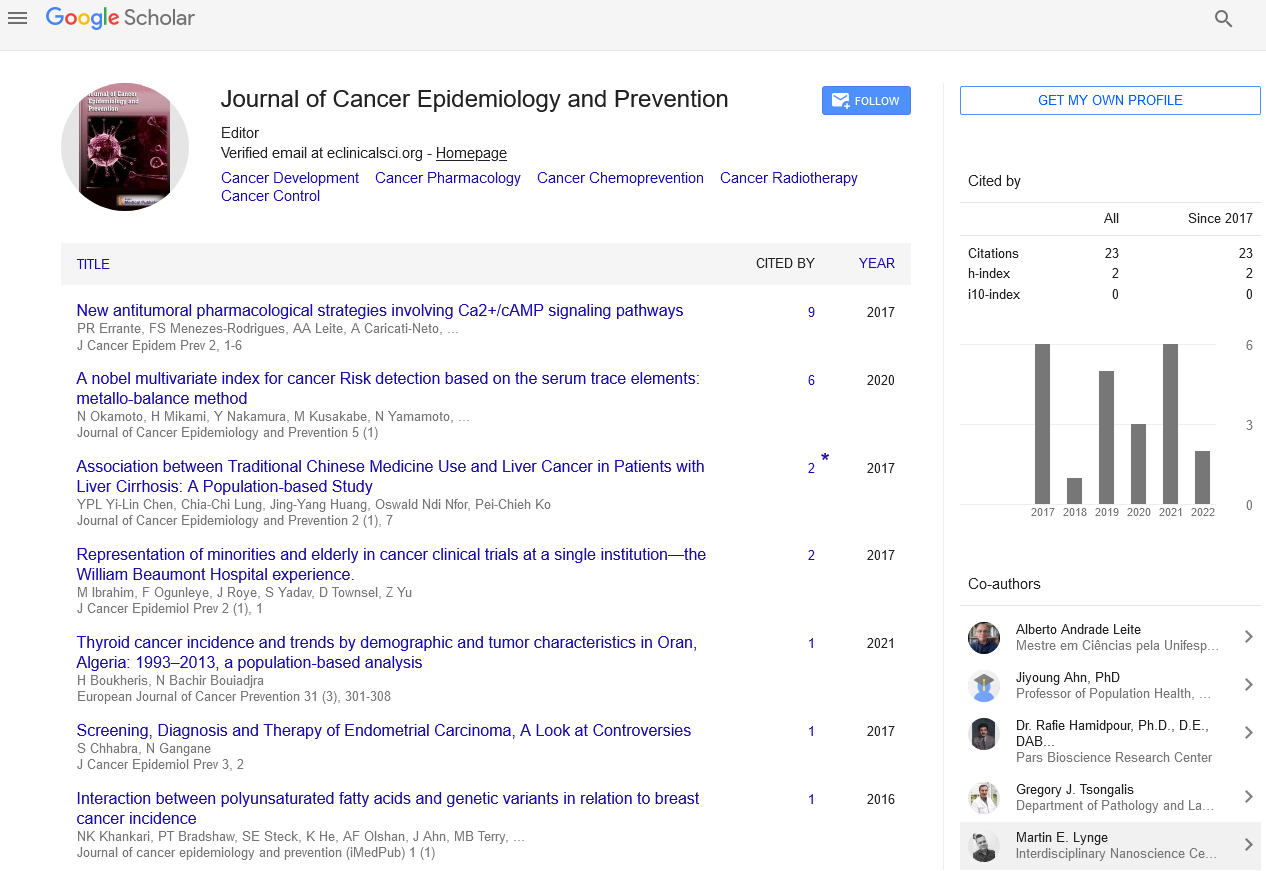Perspective - (2023) Volume 8, Issue 1
Glyconanoparticles that are Specifically Linked to Stomach and Digestive Tract Disease
Zikai Lin*
Department of Radio Oncology, University of Aveiro, Portugal
*Correspondence:
Zikai Lin,
Department of Radio Oncology, University of Aveiro,
Portugal,
Email:
Received: 31-Jan-2023, Manuscript No. IPJCEP-23-16271;
Editor assigned: 02-Feb-2023, Pre QC No. IPJCEP-23-16271 (PQ);
Reviewed: 16-Feb-2023, QC No. IPJCEP-23-16271;
Revised: 21-Feb-2023, Manuscript No. IPJCEP-23-16271 (R);
Published:
28-Feb-2023, DOI: 10.36648/IPJCEP.23.08.009
Introduction
When a cell lacks the ability to repair DNA damage, it tends to
keep it at a higher level. During the process of the cell’s DNA
replication, these issues may result in errors, including changes
that cause disease. Numerous inherited DNA repair disorders
have been linked to an increased risk of cancer. Moreover, various
tumors need specific DNA fix chemicals. For instance, numerous
malignancies have been linked to low levels of the DNA
fixative O-6-methylguanine-DNA methyltransferase.
Description
According to Lingg and colleagues, cancer cell lineages may
show an increase in the expression of a repair capability, which
may be of clinical significance as they develop. A cell lineage
may be more likely to develop cancer if it does not properly
repair DNA. A protein that is typically only expressed in meiotic
cells, where it maintains an unaffected organism line, is encoded
by the DNA fix quality DMC1. Be that as it may, various
illness cell lines, like lymphoma, cervical, and chest dangerous
development cell lines, express DMC1. Meiotic DNA fix characteristics
like DMC1 can possibly both speed up the advancement
of disease cells and lessen the practicality of anticancer
therapies like radiation treatment by controlling endogenous
DNA harm during the development interaction. Incidental effects
may occur nearby due to the disease’s mass or ulceration.
The block of the bronchi, which can bring about pneumonia
or hacking, is one of the many impacts of cellular breakdown
in the lungs. The throat may become congested as a result of
an esophageal malignant growth, making gulping difficult or
painful. Additionally, bowel narrowing or obstruction caused
by colorectal cancer can alter bowel habits. There can be noticeable
knots caused by masses in the gonads or stomach. Ulcerative depletion can lead to secondary effects like bleeding
in the stool, weakness or rectal death, blood in the urine, and
strange vaginal passing. Patients with state of the art sickness
could experience confined torture, yet the hidden development
consistently causes no irritation. Liquid biopsy, otherwise
called CTC acknowledgment, enjoys various upper hands over
ordinary tissue biopsies. They are easy to use, can be used multiple
times, and provide more important information regarding
the progression of the disease, the viability of treatment, and
metastatic disease. For instance, the progression of malignant
growth has been linked to the likelihood of CTC identification
in blood tests. The procedure is simple and safe, and multiple
blood samples can be taken at the same time. It seems paradoxical
that intrusive methods that may limit patient consistency
are required for the investigation of strong cancers. It may
be possible to work on a patient’s visualization and personal
satisfaction by simplifying the process of changing their treatment
when it is possible to follow the progression of the infection
over time. When repeated CTC counts are low and do
not rise, it is essential to avoid the need for surgery in order to
predict how the disease will progress in the future; Avoiding
the bet that goes with sickness operations’ natural malignant
growth genicity is one of the obvious advantages of avoiding
an operation.
Conclusion
Cell breakdown in the lungs is by and large consistently achieved
by smoking. The remaining cases were caused by accidental genetic
mutations or exposure to hazardous substances like radon
gas and asbestos. As a result, efforts to stop cell breakdown in
the lungs encourage people to avoid harmful engineered compounds
and quit smoking. Quitting smoking reduces the risk of
spreading the disease and improves treatment outcomes for lung cancer patients with cellular breakdown.
Acknowledgement
None.
Conflict of Interest
The authors declare that they have no conflict of interest.
Citation: Lin Z (2023) Glyconanoparticles that are Specifically Linked to Stomach and Digestive Tract Disease. J Cancer Epidemiol
Prev. 8:009.
Copyright: © 2023 Lin Z. This is an open-access article distributed under the terms of the Creative Commons Attribution License,
which permits unrestricted use, distribution, and reproduction in any medium, provided the original author and source are
credited.

